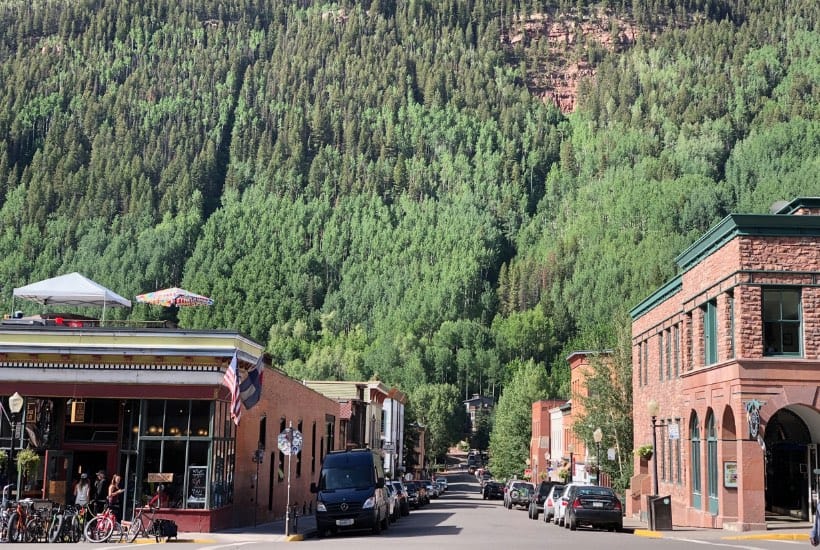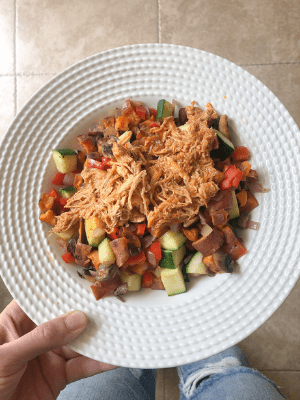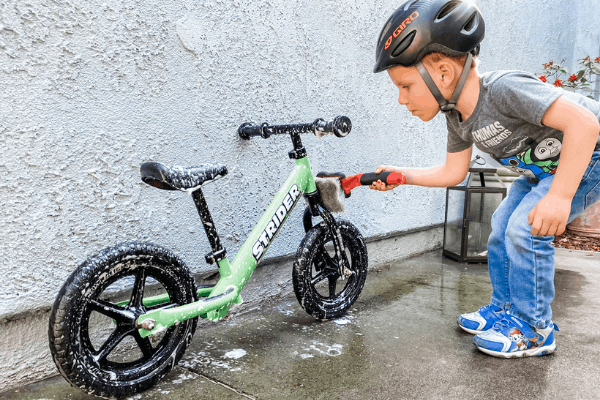We all know that we should recycle and skip single-use plastic, but there are other ways we can be more environmentally conscious. Here’s a list of 13 things you can easily do to be more eco friendly.
My husband and I had a discussion recently about whether one person’s decision to live an eco friendly lifestyle can make a difference in the world. His opinion is that it doesn’t matter what he does because there are too many other people who would cancel out his actions.
But I disagree. I believe that change starts with each of us within our own homes. One person can make a difference, especially if they inspire others to start, too.
I’m no expert in green living, but I’m making baby steps each and every day. While It can seem overwhelming and expensive, you don’t have to go out and buy a Tesla or add solar panels to your house to be eco conscious.
Here are 13 little-known changes you can easily make.

**This post contains affiliate links. If you click and make a purchase, I may receive a small commission (at no additional cost to you). Read my affiliate disclosure for more info.**
How To Be More Environmentally Conscious
1. Don’t waste food.
According to the Natural Resources Defense Council, food waste makes up 21 percent of the content in U.S. landfills, and is the number one contributor by weight. Wasted food also generates climate change pollution equivalent to 37 million cars per year.
The NRDC estimates that unused food wastes about 21 percent of the freshwater used for agriculture in the United States. That’s a lot of considering that agriculture accounts for approximately 80 percent of the United States’s consumptive water use and more than 90 percent in many states in the Western part of the country.
Besides the environmental impact, think of how much money you could save. The average American throws away more than 400 pounds of food per person per year, meaning that the average family of four wastes an average of $1,800 annually. What could you do with that extra money?!
My favorite meal planning app is Plan To Eat. It’s helped us reduce how much food we throw away, save a ton of money, and eat healthier.

2. Eat locally-grown food.
When you buy locally-grown food, it travels fewer miles and therefore uses less transportation resources. In addition, local produce is fresher, and has more flavor and nutrients.
Visit your town’s farmer’s market and stop at roadside produce stands to support your small, local farmers and reduce your impact on the environment.
3. Combine your errands into fewer trips.
In the United States, transportation accounted for 28.2 percent of 2018 greenhouse gas emissions. Greenhouse gases drive climate change because they make the planet warmer by trapping heat.
How many times do you run out for one thing at the grocery store? It not only wastes your time, but it affects the environment, too. Combine as many errands as you can. Plan your stops so you’re not driving all over and going out of your way.
Better yet, ride a bike or walk when you can!
4. Borrow books from the library instead of buying them.
Many of us read a book one time and then it sits on a shelf. But stop and think about the resources that go into manufacturing that book and transporting it to the store or your home.
Borrowing from the library reduces these costs because each book is read by many people. It’s like using a reusable water bottle over a single-use plastic bottle!
Alternatively, you can read on a Kindle or similar e-reader. (Just beware of the health effects from the blue light emitted from these devices.)

5. Buy less stuff.
Minimalism isn’t just about saving money. Think about all energy that goes into manufacturing, storing, and transporting all the c*r*a*p that you buy. And do you really need all that stuff? I bet not.
6. Buy better things.
When you buy fewer things, you can invest in items that you really love. You can spend a little more on organic clothing, clean beauty products, and non toxic cleaning products.
And buying better things means that you’ll keep it longer than you would more cheaply made items.
7. Buy second-hand items.
Buying second-hand items is one of the easiest ways to be more environmentally conscious. You can buy all sorts for things, from clothing to furniture. Especially if you live in a wealthy area like I do, you can find some really great items and save a lot of money. My mother-in-law loves thrift shopping and buys a lot of very nice clothes for my kids this way.
Why buy second-hand? Well, fast fashion, in particular, has devastating impacts on the planet. Fast fashion is clothing that is produced cheaply and not made to last. Clothing production uses a lot of water, harmful chemicals, and a lot of energy. There’s also a large amount of fabric waste, which ends up in landfills and is often not biodegradable due to its synthetic content.
8. Sell items you no longer need.
There’s a lot of truth in the saying, “Someone’s trash is someone else’s treasure.” I helped a neighbor a few weeks ago with a garage sale, and I was surprised at the things people bought.
I sell a lot of items, especially kids’ clothes, on Facebook Marketplace. You can also use Craigslist, OfferUp, and eBay. For clothes, you can use online sites like Poshmark and ThredUp.
Thrift shops and consignment stores are other options. Let someone else do the work for you!

9. Take care of what you have.
Taking care of your things means that fewer items end up in landfills. Repair things around your house or call a handyman. Work on clothing to get stains out. (Or find in-laws who will do it for you. That’s what I do!) Sew on buttons that have come off shirts and jackets. Re-sole dress shoes when they’re worn down.
Having grown up in a family that lived paycheck to paycheck, I learned early on to take care of my things because they wouldn’t get replaced. My in-laws also taught my husband to be gentle with his possessions, and we’re raising our kids to do the same thing.
If you have kids, I highly recommend taking them on a little field trip to your local landfill. I took my kids a few months ago, and it had a big impact on my seven-year-old daughter. It sparked a great conversation about taking care of our things and why we don’t buy things we won’t use.

10. Re-purpose items.
Before you buy anything new, go “shopping” in your own house to see what you can re-purpose. Sometimes all it takes is a little low-VOC paint to give new life to an old piece of furniture.
11. Rent or borrow items you don’t use very often.
Rent a dress from Rent the Runway for your cousin’s wedding. Borrow tools from a neighbor for that random house project you’re doing.
Not only does this help the environment by reducing the number of items manufactured, but it’ll save you money and keep your house and garage clutter-free.
12. Don’t dry clean your clothes.
Most dry cleaners use a chemical solvent called perchloroethylene (also known as tetrachloroethylene or “perc”) that is likely a human carcinogen. It can also irritate the lungs and eyes, and cause headaches, dizziness, and vision problems. If perchloroethylene is spilled, it can end up in the environment and harm aquatic life.
13. Reduce paper mail.
Sign up for electronic billing and notifications, and pay your bills online. Sign up for DMAchoice to whittle down which direct mail you want to receive. And use Catalog Choice to cancel all those catalogs you don’t want.
Final Thoughts on Being More Environmentally Conscious
It’s important to start living green to protect our planet for future generations. These sustainable living ideas are easy ways to start reducing your carbon footprint.
This post is about how to be more environmentally conscious.




Leave a Reply